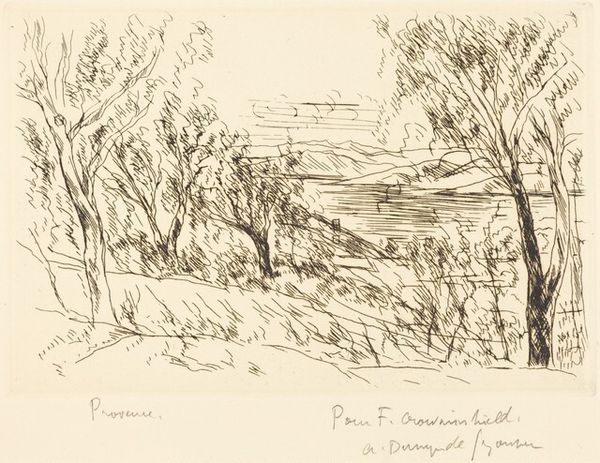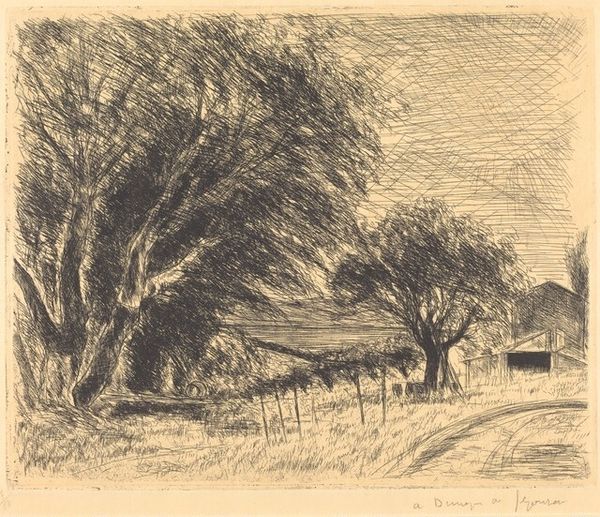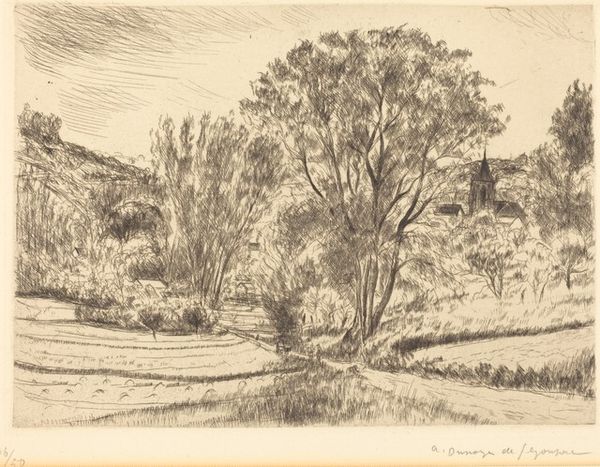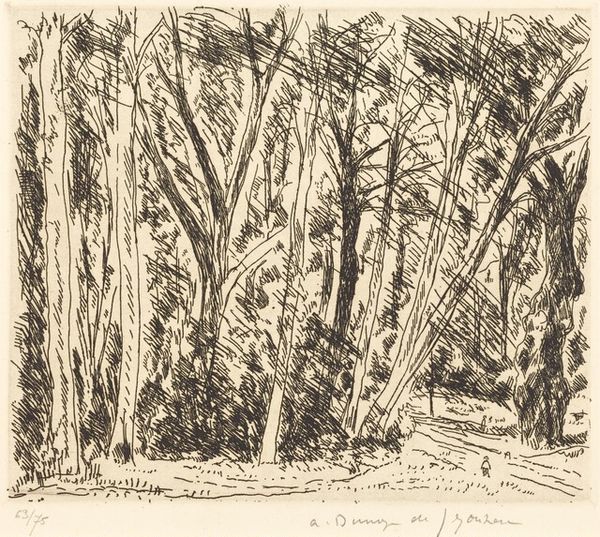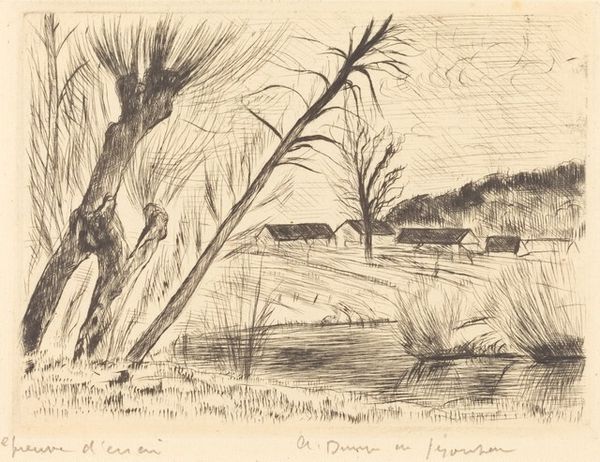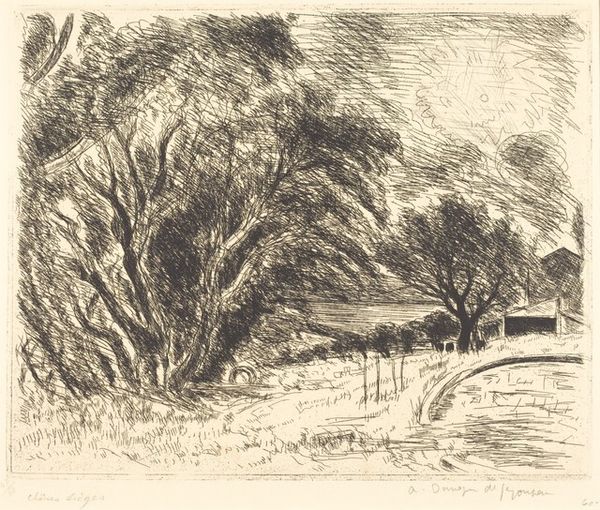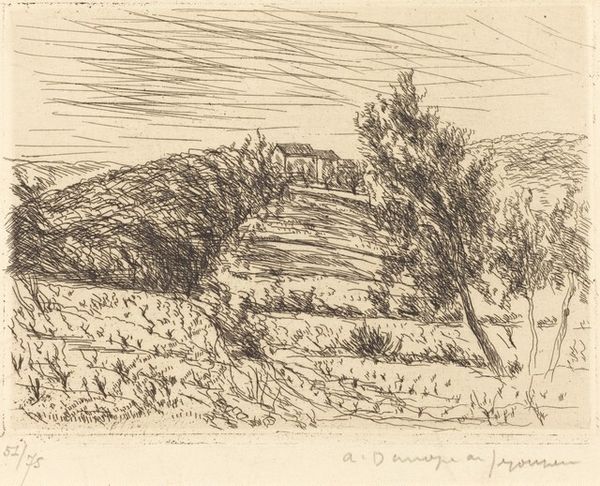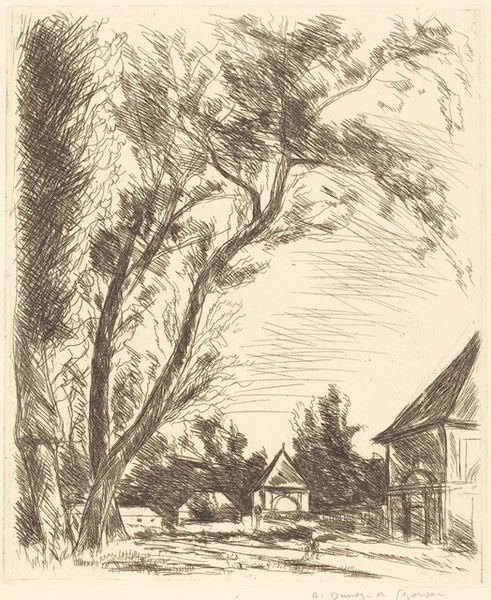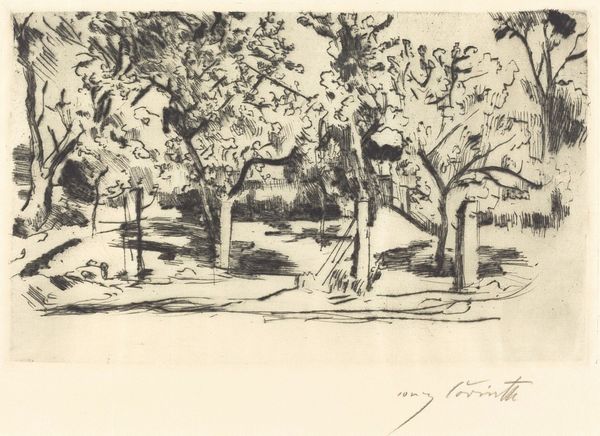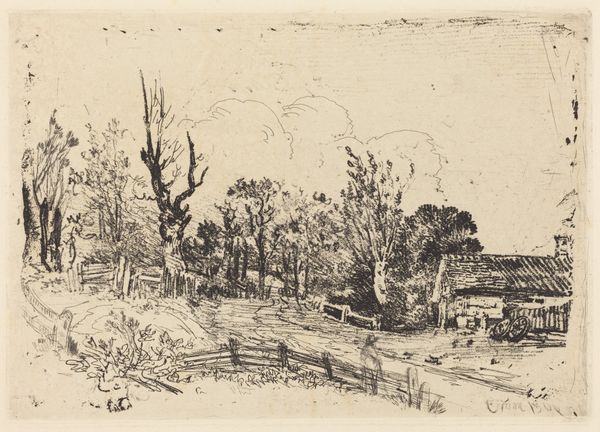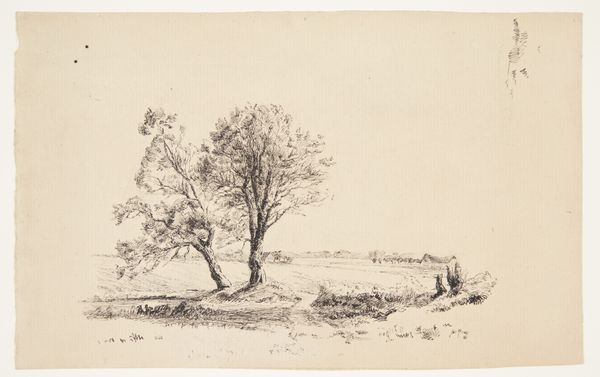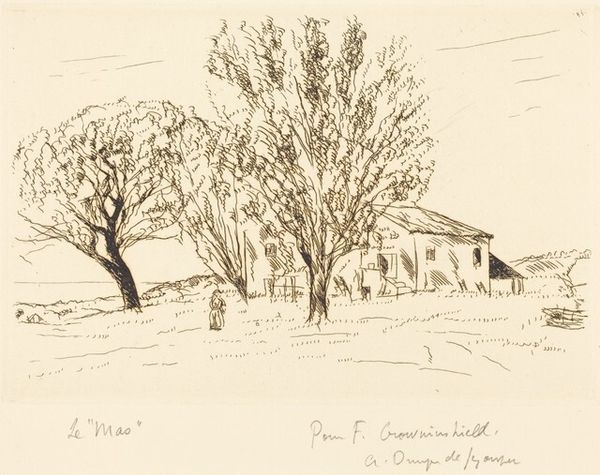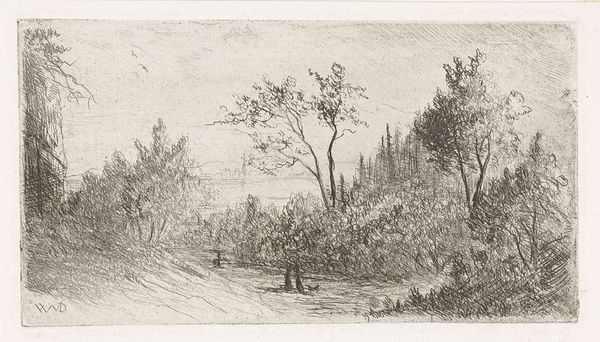
Saint-Tropez, la ferme a l'aire (petite planche) 1925
0:00
0:00
drawing, print, etching, ink
#
drawing
#
pen drawing
# print
#
etching
#
landscape
#
ink
#
realism
Copyright: National Gallery of Art: CC0 1.0
Editor: This is André Dunoyer de Segonzac's "Saint-Tropez, la ferme a l'aire (petite planche)", an etching from 1925. It's a scene rendered in incredibly fine lines; it's somehow both busy and peaceful at the same time. What catches your eye when you look at this work? Curator: Immediately, I see how the cross-hatching invokes a timeless connection between land, labor, and leisure. The artist chooses the etching needle to memorialize not the *what* but the *how* of seeing the Saint-Tropez landscape. Editor: Can you elaborate on the 'how' of seeing? Curator: Notice how the foreground trees almost function as curtains, framing the distant bay. Consider the cultural memory associated with Saint-Tropez. Before its fame as a jet-set destination, it was a working port, its identity intertwined with fishing and agriculture. The print offers us that view—but only just slightly obstructed. What feeling does that evoke? Editor: I guess it reminds me that even places change, and beneath the surface, there's a whole other story. It makes me wonder if Segonzac intended to highlight the enduring aspects of the landscape amidst societal shifts. Curator: Precisely. By emphasizing the underlying forms of nature and rustic life, he speaks to something deeper about human presence in that space. Think of it as the collective memory of Saint-Tropez etched onto the plate – and into us. Editor: That's a very different Saint-Tropez than I imagined, it enriches the artwork quite a lot. Curator: Indeed. It invites us to question what we consider iconic and how images shape and carry cultural memory.
Comments
No comments
Be the first to comment and join the conversation on the ultimate creative platform.
